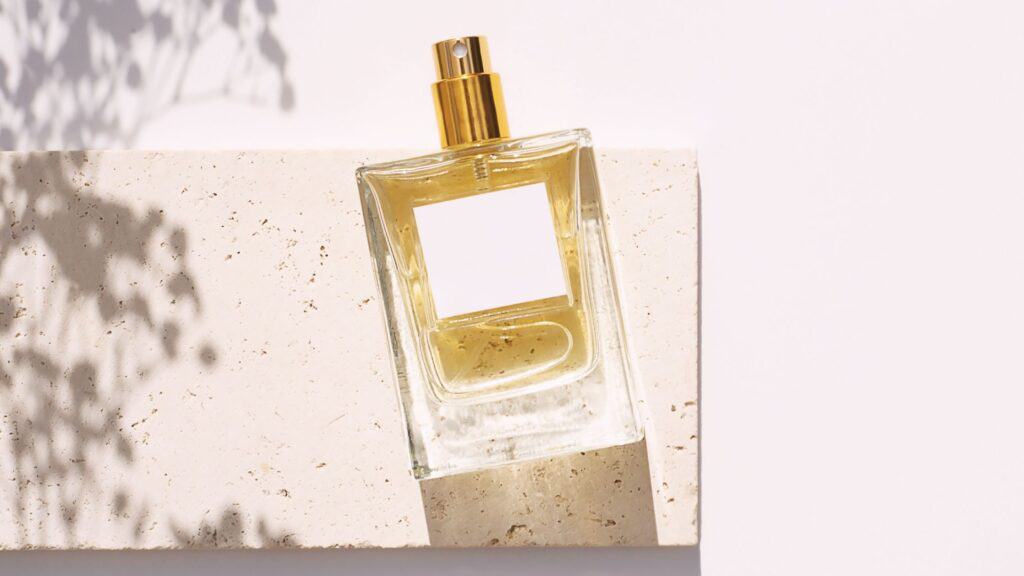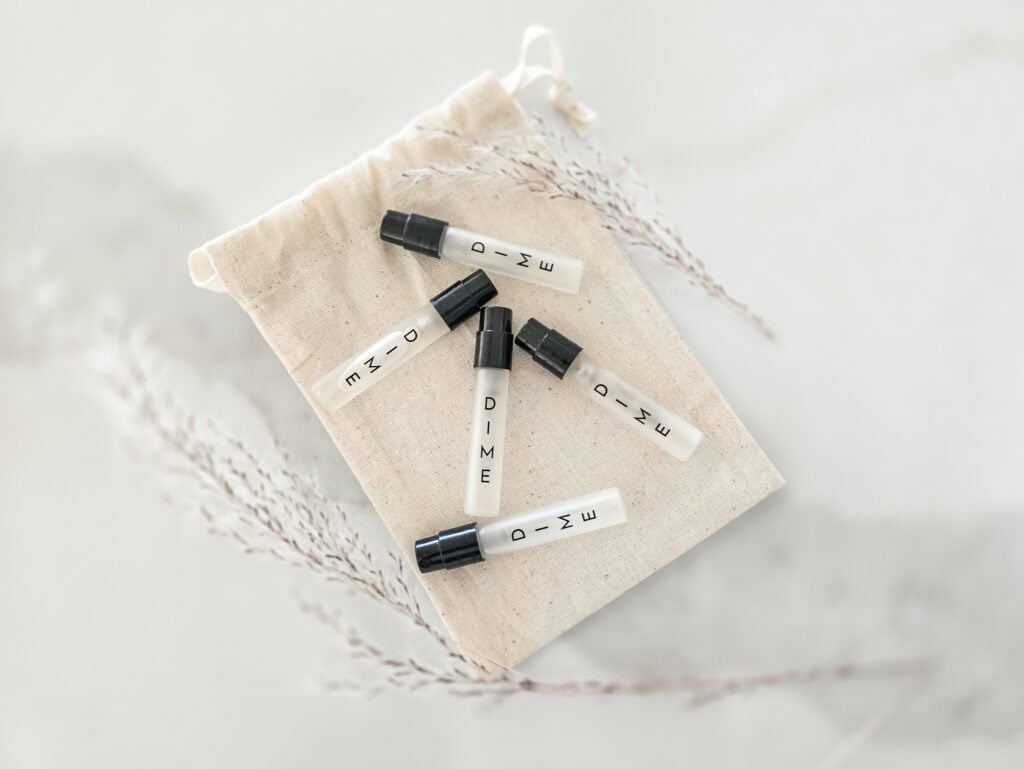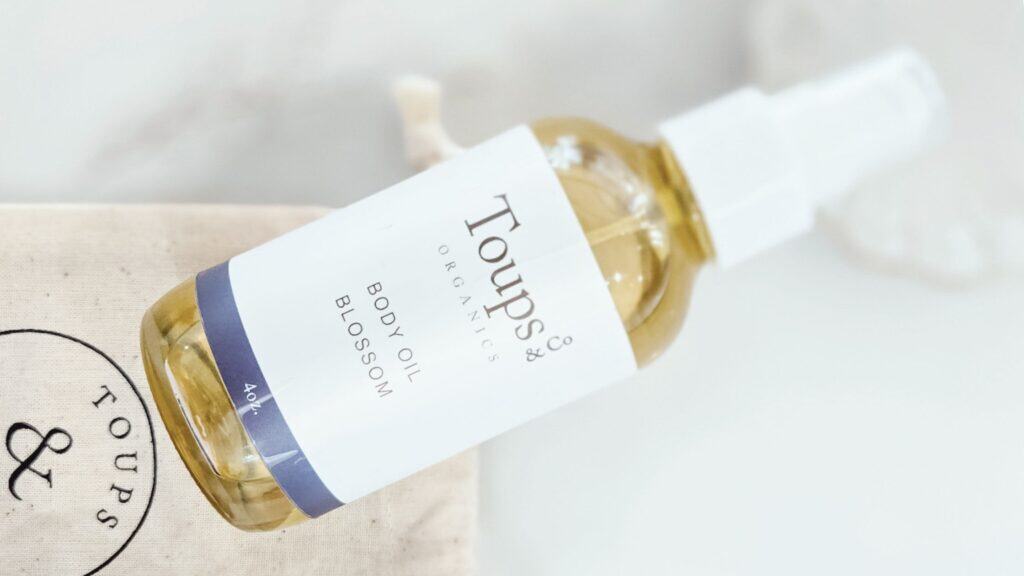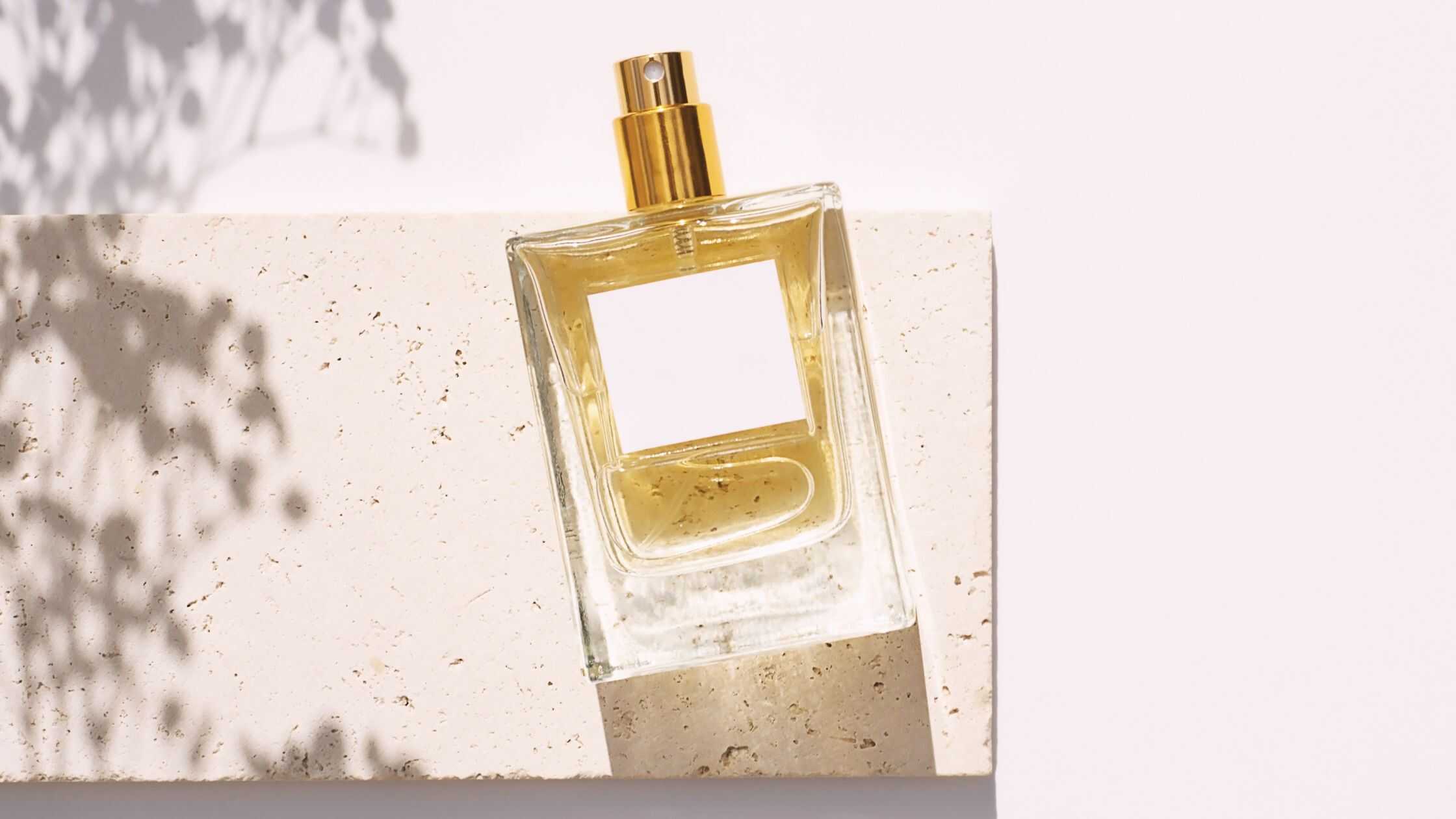The Hidden Dangers of Perfume: A Clean Perfume Guide for Healthier Living
Perfume is often the finishing touch to our personal care routine. It can evoke memories, uplift moods, and express personality. But behind the allure of our favorite scents may lie a hidden cocktail of harmful chemicals.
Many mainstream perfumes contain synthetic fragrances that can pose risks to our health and the environment. Let’s explore the science-backed dangers of artificial fragrances, what to avoid in perfumes, and how to choose clean, safe alternatives.

What Is “Fragrance”?
When you see “fragrance,” “parfum,” or “essential oil blend” on a label, you may assume it refers to a single pleasant-smelling ingredient. In reality, these terms often mask a complex mixture of dozens, even hundreds, of chemicals. Due to trade-secret protections, manufacturers are not required to disclose individual fragrance components.
This lack of transparency makes it difficult for consumers to know exactly what they’re being exposed to, which is especially concerning given that many fragrance ingredients have been linked to health issues such as allergies, asthma, hormone disruption, and even carcinogenic effects.
According to the International Fragrance Association (IFRA), there are over 3,000 chemicals used in fragrance formulations. Many of these lack comprehensive safety data. So, how do we, as consumers, know exactly what is in our favorite perfume if the ingredients are not disclosed? The fragrance world can be tricky to navigate, but the best way to know is to take perfume education into our own hands.
Health Impacts of Synthetic Fragrances
Most of us love the confidence and comfort a good perfume brings. But what if that delightful scent was doing more harm than good? Many perfumes and fragranced products contain a blend of undisclosed chemicals—often labeled simply as “fragrance” or “parfum.”
This vague term can hide hundreds of synthetic compounds, many of which are known to disrupt hormones, trigger allergies, and even contribute to long-term health issues. These are some of the common health risks associated with artificial fragrance.
Respiratory and Allergic Reactions
Fragrance chemicals are among the most common indoor air pollutants and have been strongly linked to respiratory issues such as asthma, bronchitis, and chronic sinus irritation. Many synthetic scents contain volatile organic compounds (VOCs) like limonene, benzyl acetate, and ethanol, which can react with indoor air pollutants (like ozone) to form secondary pollutants such as formaldehyde—a known respiratory irritant. Yes, you read that right; formaldehyde may not be listed in the ingredients, but it may be a byproduct of chemical-releasing agents.
The research is out there if we want to dig in. Studies confirm the connection between perfumes, air quality, and our products, which have been reported to cause adverse health effects, including breathing difficulties and asthma attacks. For individuals with preexisting conditions, even low-level exposure to fragranced air fresheners, perfumes, or personal care products can trigger symptoms ranging from coughing and wheezing to shortness of breath.
In addition to respiratory symptoms, fragrances are a top cause of allergic contact dermatitis, a form of skin inflammation caused by direct exposure to allergens. According to the European Commission’s Scientific Committee on Consumer Safety, at least 100 fragrance ingredients are known skin sensitizers, with compounds like linalool and citronellol being among the most frequent offenders.
These allergens can cause redness, itching, swelling, or blistering upon repeated exposure, especially in individuals with sensitive skin or eczema. The problem is compounded by the fact that “fragrance” on product labels can represent hundreds of undisclosed chemicals, making it difficult for consumers to avoid triggers.
Unfortunately, even products marketed as “unscented” may contain masking fragrances that can still trigger allergic responses. In other words, read labels and familiarize yourself with what to look for and which ingredients to avoid.
Join the HSIB Instagram Community!
Neurological Effects
Synthetic musks and phthalates have been associated with neurotoxicity, contributing to headaches, dizziness, and cognitive impairments. I’ve experienced this firsthand and have been careful about using scented products for years. The older I get, the more sensitive I get, and no perfume (or any scented product for that matter) is worth the risk of neurological side effects.
I know we don’t often put two and two together, but if you start paying attention or experiment with removing perfumes and artificial fragrances, you may be surprised at what symptoms start to disappear. If I can recommend removing anything from your household, fragrance would be number one. It’s not just hidden in perfumes, but from everything from cleaning supplies to laundry detergent to wall plug-ins and candles.
If you have frequent unexplained headaches or dizziness, do yourself a favor and ditch all things with fragrance. From firsthand experience, your mind will thank you.
Endocrine Disruption
Many of the synthetic chemicals used in perfumes are classified as endocrine-disrupting chemicals (EDCs). These substances interfere with the body’s hormonal system, which controls everything from metabolism and growth to reproduction and mood. One of the most common offenders found in fragrances is diethyl phthalate (DEP), a phthalate used to stabilize scent and extend its longevity.
Research published in Environmental Health Perspectives links phthalate exposure to altered levels of reproductive hormones, including reduced testosterone in males and changes in estrogen regulation in females. These disruptions can lead to issues such as infertility, early puberty, endometriosis, and even certain hormone-sensitive cancers like breast and prostate cancer.
One of the most troubling aspects of endocrine disruptors in perfumes is their ability to accumulate silently in our bodies. Compounds like Galaxolide and Tonalide—types of synthetic musks—are lipophilic, meaning they build up in fatty tissues over time. A CDC biomonitoring study detected synthetic musks in the blood and breast milk of a majority of participants, showing how widespread exposure has become.
And since most of us use fragranced products daily—from perfume and lotion to laundry detergent and deodorant—the exposure is not only frequent but compounded by multiple sources. Even low doses, when sustained over time, can result in significant biological effects, especially during vulnerable life stages like pregnancy, puberty, or menopause.
Reproductive and Developmental Issues
Prenatal exposure to certain phthalates has been associated with a 70-78% increased risk of childhood asthma. Other studies connect these chemicals to insulin resistance, cardiovascular disease, and attention and learning disorders.
The danger isn’t limited to adults. Prenatal exposure to fragrance chemicals may have long-term consequences on child development. A 2014 study from Columbia University found that higher phthalate levels in pregnant women were associated with lower IQ scores in their children by age seven.
Another study published in Environmental Research linked prenatal exposure to synthetic musks—commonly found in perfumes—to increased behavioral issues and reduced cognitive function in children. Because endocrine disruptors can mimic or block hormones, they can interfere with developmental processes at critical stages, often with permanent effects.
Cancer Risk
Many synthetic fragrance ingredients are known or suspected carcinogens. For example, benzophenone and methyleugenol—used in some perfumes and personal care products—are classified as cancer-causing by California’s Proposition 65 and the National Toxicology Program. The International Fragrance Association (IFRA) lists nearly 4,000 ingredients used in fragrance blends, and several overlap with those classified as recognized or probable carcinogens.
Another concerning chemical is styrene, widely used in scented sprays; in 2011, the National Toxicology Program described styrene as “reasonably anticipated to be a human carcinogen,” a finding reaffirmed by a National Academy of Sciences panel and EWG.
Why Regulations Fall Short
Despite the growing body of scientific evidence, regulation remains weak. In the U.S., the FDA does not require manufacturers to disclose fragrance ingredients, relying instead on industry self-regulation. Products labeled “unscented” can still contain masking fragrances.
In contrast, Europe maintains far stricter regulations when it comes to fragrance ingredients. The European Union bans or restricts over 1,300 chemicals in cosmetics and personal care products, compared to only around 30 in the United States.
The EU also mandates allergen disclosure for 26 known fragrance allergens and enforces precautionary principles that require companies to prove an ingredient’s safety before it can be used. This more rigorous oversight prioritizes consumer health and transparency, pushing manufacturers to adopt safer and cleaner formulations.
Regardless of where we live or buy our products from, educating ourselves is our first line of defense against unknowingly purchasing products that are harming our health. There are so many things I wish I had known in the beginning of my beauty career, but it’s never too late to educate yourself and make positive changes for you and your family’s health. The upside is we can take education and awareness into our own hands and make a difference every day in the lives around us.

What to Look for in a Clean Perfume
Fortunately, consumers have more control than ever. Clean perfumes offer safer alternatives that prioritize transparency and safety. Some key characteristics to look for in a clean perfume are:
- No Phthalates or Parabens
- No Synthetic Musks (e.g., Galaxolide)
- Free of BHT/BHA, Formaldehyde, and other VOCs
- Full Ingredient Disclosure
- Sustainable and Ethical Sourcing
Ingredients to Avoid
Ingredient
Phthalates (DEP, DBP, DEHP) Synthetic musks Parabens Formaldehyde releases BHT/BHA Iso E Super
Risk
Hormone disruption Hormone Mimicing Estrogenic Activity/Cancer Links Carcinogenic, respiratory issues Endocrine disruption Skin sensitization
Clean Perfume Buying Guide
Here’s how to build a safe, clean fragrance collection:
Read Labels Thoroughly: Avoid vague terms like “fragrance” or “parfum.”
Avoid Known Harmful Chemicals: Steer clear of phthalates, musks, and parabens.
Seek Certifications: Look for trusted symbols like EWG VERIFIED.
Simplify: Choose perfumes with fewer, truly natural ingredients (and not just catchy labels).
Patch Test: Especially if you have allergies or sensitive skin.

Recommended Clean Perfume Brands
To be completely honest, finding clean perfume brands is challenging. Many claim to be “natural,” but they are far from being clean or chemical-free. Be cautious when choosing perfumes. Read labels and use helpful apps like EWG to check ingredients. Platforms like Think Dirty and the EWG Skin Deep database can help you verify the safety of your choices.
Bonus…all of these perform brands offer a discovery kit with multiple perfumes in a small size to give them a try to find the perfectly paired scent for you. Plus, these mini sizes are perfect for your purse, suitcase, or tight spaces when you need a refresh on the go.
Wyld Notes
Wyld Notes earns its reputation through a steadfast commitment to purity, transparency, and sustainability. Their entire line is crafted with 100% natural, plant-based ingredients, organic non-denatured sugarcane alcohol, and absolutely no synthetics, phthalates, parabens, or hormone-disrupting chemicals.
Beyond formulation, they champion ingredient visibility—each scent lists every botanical component, with no hidden “fragrance” term masking potential toxins which makes them number one in my book. Wyld Notes also sources ingredients using regenerative farming and wild harvesting, ensuring ecological integrity and better soil health . Finally, their vegan, cruelty-free ethos and third-party transparency align with modern clean-beauty values, making them a top-tier choice for those seeking luxurious-wear without compromising health our health.
Dime Beauty
Dime Beauty stands out in the clean beauty space by combining transparency, skin-friendly ingredients, and strong third-party validation—making it a go-to choice for safe fragrances. Their perfume line is formulated using organic sugar‑cane alcohol instead of harsher solvents like Alcohol SD 40, which can irritate skin.
Each scent blends botanical-derived and carefully vetted ingredients, all scored within the EWG’s strict safety thresholds—products like their popular 7 Summers are even EWG Verified for full ingredient transparency and avoidance of known hazards. On top of that, real‑world reviews from outlets praise Dime’s long-lasting, compliment-worthy scents. Together, rigorous ingredient standards, certifications, and positive consumer feedback make Dime Beauty a reliable, health-conscious choice for fragrance lovers.
Shop Dime Beauty Fragrances here.
Esas
Esas Beauty is redefining clean perfume through its dedication to full transparency, sustainable sourcing, and pure botanical formulations. Founded by chemists who moved away from synthetic fragrance, Esas focuses on crafting scents using 100% natural ingredients, including certified organic alcohol, coconut-derived glycerin, and plant extracts—no hidden “fragrance” blends or hormone-disrupting synthetics—ensuring each product is both clean and high-performing.
Reviewers consistently applaud Esas for delivering fresh, refined scents that are genuinely luxurious and long-lasting, such as their bestselling Bare fragrance, while remaining gentle and non-irritating—even to sensitive people . Plus, users from the clean-beauty community highlight Esas’s commitment to transparency (listing all ingredients openly) and the refreshing peace of mind that comes with choosing a truly toxin-free fragrance .
Shop Esas Perfumes here.
Abel Fragrance
Abel has built its reputation on a foundation of 100% natural, non-toxic ingredients, transparency, and ethical sustainability—making it a go-to for us clean fragrance lovers. Every scent in their collection, from bestselling Cyan Nori to rich Black Anise, is crafted using only plant-derived components and organic grain alcohol, with zero synthetic chemicals like phthalates, parabens, or dyes.
Abel distinguishes itself by openly publishing full ingredient lists for all products, setting a rare standard of transparency in a secretive industry. Beyond clean formulations, they prioritize environmental responsibility—utilizing compostable bioplastic caps, FSC-certified packaging, vegan and cruelty-free certification, and even carbon-neutral shipping for many regions.
Other Scent Options

Perfumes aren’t the only way to smell good throughout the day. We don’t have to limit ourselves to spray perfumes. Body oils, lotions, and even deodorants can leave you smelling fresh without worrying about scent side effects. Here are a few of my favorite perfume alternatives:
Toups + Co. Organics Body Oil
Toups Body Oil is a silky alternative that feels so luxurious as you slide it on your skin. A little bit goes a long way and lasts all day, so you not only smell fresh, but feel fresh too. Reap more than just scent benefits and get glowy soft skin all while smelling good too. My personal favorite is the Blossom scent for its subtle floral aroma with a hint of sweetness.
Shop Toups + Co. Organics Body Oil here.
Oliveda Body Oil Serum or Body Balm
Oliveda has some seriously beautiful-smelling serums and body balms which give your skin moisture and nutrients all while smelling your best. My personal favorite is the Grapefruit Rose scent which gives a hint of flowery sweetness mixed with a refreshing hint of grapefruit. Why just smell good when you can nourish your skin at the same time.
Shope Oliveda Body Oil Serums and balms here.
More recent posts
A Positive Shift Toward Safer Scents
While the data on synthetic fragrance hazards can be alarming, the good news is that us as consumers have power. With more clean perfume brands emerging and other superb scent options on the market, it’s much easier to choose products that align with our health values. We don’t have to sacrifice scent for safety.
By supporting transparent brands and reading labels and choosing natural and organic products, you’re not only protecting your own health—you’re also encouraging the industry to shift toward safer, more ethical practices. We forget the power we hold in our choices and our purchases. Let’s keep holding the industry accountable to safer standards for us and for our children.
Perfume should uplift you—not undermine your well-being. By educating yourself and making informed choices, you can enjoy the world of fragrance with peace of mind. Clean scents do exist, and they’re beautiful, ethical, and safe. Let your signature scent reflect not just your style, but your values too.
Hey, Sweet Friend!
Welcome! I’m Ashley, a lover of beauty in all its facets. I am a hairstylist, writer, & girl mom passionate about helping women flourish by seeking beauty beyond the surface. I love to encourage women to create clean & healthy beauty habits & homes grounded in faith and live by my motto…clean, pretty, + simple. I would love for you to join me in your healthy beauty journey!
References & Further Reading
- Environmental Working Group – Fragrance
- Safe Cosmetics Campaign – Fragrance Chemicals
- ScienceDirect – Phthalates and Health Effects
- Time Magazine – Is Perfume Safe?
- wyldnotes.com+3wyldnotes.com+3wyldnotes.com+3
- https://esasnyc.com/pages/esas-beauty-story
- https://dimebeautyco.com/pages/dime-difference
- https://us.abelfragrance.com/pages/our-story
This blog is for informational purposes only and is not to be seen as medical advice. Resources are provided to inform you and offer insights into the composition of our products for your educational purposes.













